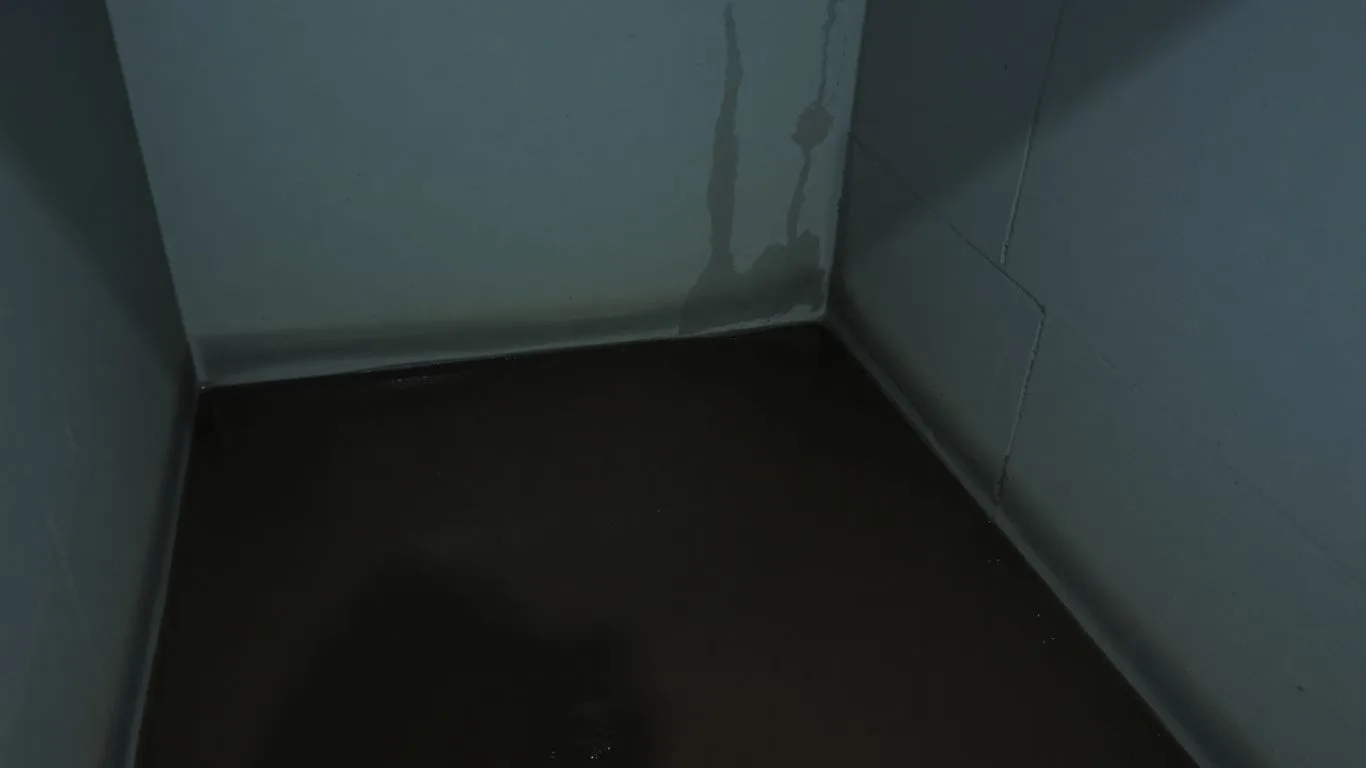How Seattle Homeowners Can Stay Ahead of Hidden Water Damage
Maintain Gutters and Downspouts Diligently
Gutters and downspouts are the first line of defense against rain. Seattle’s climate means they can fill up fast with leaves and debris. When they get clogged, water can overflow right onto your foundation. This is a big problem. Regular cleaning prevents water from pooling around your home’s base. It’s a simple task that makes a huge difference in preventing water damage. Keep an eye on them, especially after big storms.
Improve Yard Grading and Drainage Systems
How your yard slopes matters a lot. If the ground slopes toward your house, water will naturally flow there. This can saturate the soil around your foundation. You might notice puddles that stick around long after the rain stops. Improving yard grading means ensuring the land slopes away from your home. This helps direct surface water where you want it to go, away from the structure. A good drainage system works with the grading to manage water effectively.
Extend Downspouts Away From Foundation
Even if your gutters are clean, the water needs somewhere to go. Downspouts should direct water far from your home’s foundation. Simply extending them a few feet can stop water from saturating the soil right next to your house. This simple step is a key part of addressing exterior water intrusion. Without proper extension, the water from the roof can still cause problems, even if the gutters themselves are clear. It’s about managing the water’s final destination.
Preventing Interior Plumbing Leaks
Hidden leaks within your home’s plumbing system can be a real headache. They often start small, like a tiny drip or a slow drain, but can quickly escalate into major problems if not addressed. Seattle homeowners should pay attention to their plumbing, as the mix of older homes and our damp climate can create a perfect storm for leaks. Trusted local experts like Paul Davis, who specialize in water damage Seattle services, help homeowners address moisture issues quickly and prevent minor leaks from turning into costly repairs.
One of the first signs that something might be wrong is an unexpected jump in your water bill. If your usage suddenly spikes without any obvious reason, like a new appliance or more people in the house, it’s worth investigating. Monitoring your water bills for anomalies is a simple yet effective way to catch potential leaks early. It’s like a regular check-up for your home’s water system.
Beyond the bill, a good homeowner should also get into the habit of inspecting common leak areas. This means taking a peek under sinks in the kitchen and bathrooms, and checking around appliances that use water, like dishwashers and washing machines. You’re looking for any signs of moisture, discoloration, or even mold. Sometimes, you might hear strange noises, like unexplained water sounds, that could indicate a leak deep within a wall or under the floor. Paying attention to these subtle clues can save you a lot of trouble down the line.
Safeguarding Against Appliance Failures
Conduct Regular Appliance Maintenance
Appliances like dishwashers, washing machines, and refrigerators are common sources of water problems. A worn hose or a faulty gasket can lead to leaks that go unnoticed for a while. These small leaks can cause significant damage over time. Regular checks are key to preventing appliance failures.
Keeping up with maintenance can save homeowners a lot of hassle. It helps spot potential issues before they turn into major water damage. Think of it as a quick check-up for your home’s hardworking machines.
It’s a good idea to schedule these checks at least once a year. This proactive approach helps ensure your appliances work as they should, without any surprise water leaks.
Check Hoses and Connections for Wear
Inspect hoses and connections regularly. Make sure they are tight and show no signs of wear. Old or brittle hoses are a prime candidate for unexpected breaks. Replacing them before they fail is a smart move.
This is especially true for washing machine hoses, which can burst under pressure. Checking these connections can prevent a sudden flood.
Here’s a quick list of what to look for:
- Cracks or bulges in hoses
- Loose fittings at the appliance or water source
- Signs of corrosion on metal connections
Addressing these small issues can prevent a much larger problem down the road.
Protecting Your Roof and Exterior
Inspect Roof Shingles and Flashing
Your roof is the first line of defense against Seattle’s frequent rain. Damaged shingles or compromised flashing can let water seep into your home. Keep an eye out for missing, curled, or cracked shingles. These are clear signs that your roof needs attention. Flashing, the metal strips around chimneys, vents, and valleys, is also vital. It directs water away from seams. If you see rust or wear on the flashing, it’s time for a fix.
Regularly inspect your roof from the ground after heavy storms. This simple check can reveal issues before they become major problems. Don’t wait for leaks to appear; proactive checks on your roof are key to preventing water damage. Addressing these exterior issues promptly helps maintain your home’s integrity.
Seal Gaps Around Windows and Doors
Drafty windows and doors aren’t just uncomfortable; they’re potential entry points for water. Over time, the caulk and weather stripping around your frames can crack or pull away. This creates small gaps where rain can sneak in, leading to water damage inside your walls or on your floors. It’s a common issue that many homeowners overlook.
Take a walk around your home and look closely at all window and door frames. If you notice any visible cracks, gaps, or areas where the sealant looks old and brittle, it’s time to reapply. Using fresh caulk and new weather stripping can make a big difference in keeping your home dry and secure. This simple maintenance step is a smart way to protect your home from water intrusion.
Small gaps around windows and doors can lead to big problems if left unaddressed. Sealing them is a straightforward way to prevent water damage and improve your home’s energy efficiency.
Basement and Crawl Space Vigilance
Seattle’s frequent rain means basements and crawl spaces are prime spots for trouble. Keeping an eye on these areas is key to avoiding bigger problems down the road. It’s easy to forget about them, but water can do a lot of damage when it gets a foothold.
Inspect Foundation for Cracks and Seepage
Look closely at your foundation walls, both inside and out. Small cracks might not seem like much, but they’re entry points for water. Pay attention to where the walls meet the floor, too; these ‘cold joints’ are common leak spots. You might see damp spots, faint water lines, or even bubbling paint if moisture is getting in. Addressing these early stops water from causing structural weakening.
Test Sump Pump Functionality Regularly
If your home has a sump pump, it’s your first line of defense against basement flooding. Don’t wait for a storm to find out if it works. Pour a bucket of water into the sump pit to see if it kicks on and pumps water out effectively. A pump that’s slow to start or makes strange noises needs attention. Consider a battery backup for power outages.
Address Dampness in Crawl Spaces Promptly
Crawl spaces can become damp and musty, creating a perfect environment for mold and wood rot. Check for standing water or just a general feeling of dampness. Proper ventilation and a good vapor barrier are important here. If you notice persistent dampness, it’s time to investigate the cause and fix it before it leads to bigger issues like compromised insulation or structural damage.
Understanding Sewer System Risks
Seattle’s frequent rain can really put a strain on your home’s sewer system. When the ground gets soaked, it puts extra pressure on underground pipes. This is especially true for older homes with aging sewer lines. Sometimes, stormwater and wastewater share the same pipes, and during heavy downpours, these systems can get overloaded. This can lead to backups and costly repairs if not addressed.
Recognize Signs of Sewer Line Strain
Pay attention to what your drains are telling you. Slow drains, especially in multiple fixtures at once, are a common indicator that something’s not right. You might also hear gurgling sounds coming from toilets or sinks, particularly after using water. Unpleasant odors, like rotten eggs or sewage, wafting from drains are another red flag. These signs often mean your sewer line is struggling to handle the flow, and a backup could be imminent. Ignoring these signals can turn a minor issue into a major problem.
- Slow-draining sinks and tubs
- Gurgling sounds from drains or toilets
- Foul odors emanating from plumbing fixtures
Addressing these early signs is key to preventing a messy and expensive sewer backup. Don’t wait until it’s too late.
Ensure Backflow Prevention Devices Are Functional
Backflow prevention devices are like a safety net for your home’s plumbing. They stop sewage from flowing backward into your house, which can happen when the main sewer lines get overwhelmed, especially during heavy rain. It’s important to know if you have one of these devices installed, often near your main sewer line exit from the house or in the basement. If you do, regular checks are a good idea. A malfunctioning backflow preventer means you’re vulnerable to sewer backups, which can cause significant water damage and health hazards. Checking these devices periodically helps protect your home from sewer system risks.
Staying Dry and Secure in Seattle
Seattle’s weather means water damage is always a possibility for homeowners. But by keeping an eye out for common issues like leaky pipes, appliance problems, and drainage concerns, folks can stay ahead of trouble. Regular checks, simple maintenance like cleaning gutters, and addressing small problems before they grow are key. Taking these steps helps protect your home, your wallet, and your peace of mind, especially when the rain starts to fall. Being proactive is really the best way to keep your Seattle home safe and dry.






